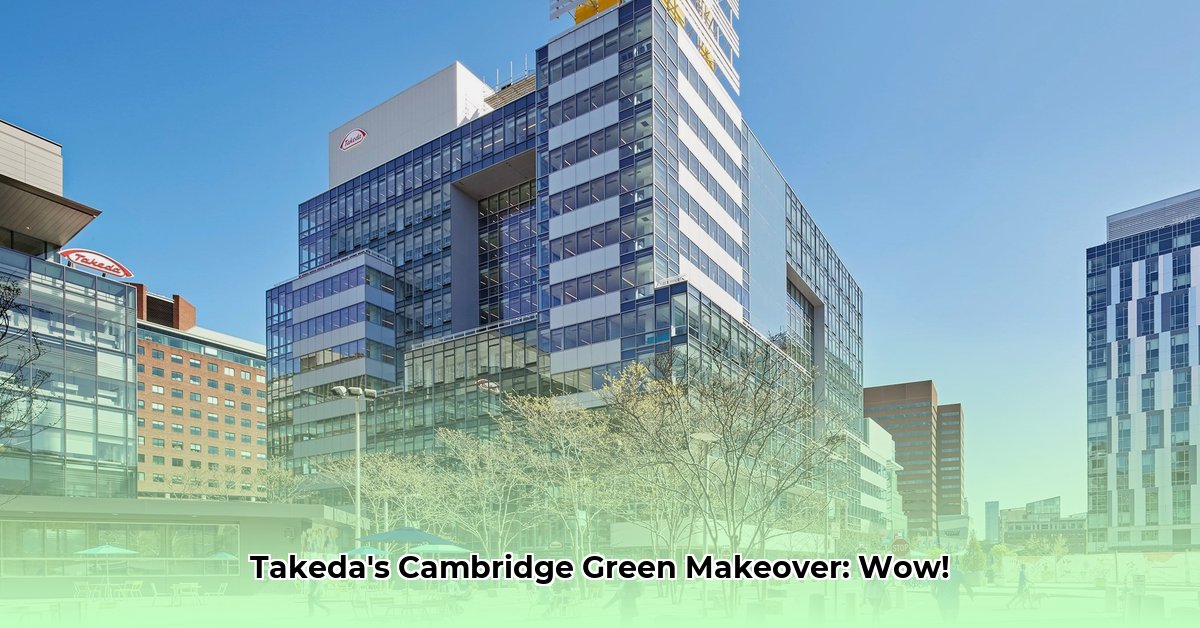
Takeda's transformation of its Cambridge headquarters at 500 Kendall Street represents a compelling case study in sustainable and employee-centric design within the competitive life sciences real estate market. This renovation showcases how strategic investment in environmentally responsible practices and employee well-being can yield significant returns, impacting not only Takeda but also competitors, investors, and the city of Cambridge. For more on sustainable building materials, check out this resource on epoxy flooring.
Takeda's Cambridge Gambit: A Strategic Investment
Cambridge, MA, and specifically Kendall Square, is a global epicenter for biotechnology. Takeda's substantial presence here positions the company to attract top talent and remain at the forefront of industry innovation. However, simply maintaining a presence wasn't sufficient; a workspace reflecting Takeda's commitment to excellence and sustainability was essential. The 500 Kendall Street renovation directly addressed this need.
Beyond Aesthetics: A Sustainable and Employee-Focused Design
The 500 Kendall Street renovation wasn't merely cosmetic. It was a strategic initiative aimed at attracting and retaining top talent while underscoring Takeda's commitment to environmental responsibility. Achieving LEED Platinum certification – the highest level of green building recognition – highlights the project's sustainability focus. This involved implementing energy-efficient systems, reducing water consumption, and using sustainable building materials, minimizing the building’s environmental impact. Isn't it remarkable how such a commitment to sustainability could also boost a company's image and attract top talent?
Employee-Centric Amenities: Fostering Productivity and Well-being
Recognizing that a positive work environment enhances employee productivity and retention, Takeda incorporated numerous employee-focused amenities into the renovation. These include:
- State-of-the-art fitness center: Promoting employee health and well-being.
- Collaborative workspaces: Encouraging teamwork and innovation.
- Improved natural light and ventilation: Enhancing worker comfort and productivity.
- Quiet zones and breakout areas: Providing spaces for focused work and relaxation.
While directly quantifying the impact on productivity requires further research, the enhanced employee satisfaction is undeniable. How can companies effectively measure the long-term return on such investments in employee well-being?
Strategic Implications: A Multi-Stakeholder Analysis
The effects of Takeda's renovation extend far beyond its walls. Consider the impact on different stakeholders:
- Takeda: Enhanced employee satisfaction, stronger employer branding, cost savings from energy efficiency, improved ability to attract top talent. Data suggests that such renovations can lead to significant reductions in employee turnover.
- Competitors: Increased pressure to upgrade facilities and improve employee benefits, leading to heightened competition for skilled professionals.
- Real Estate Investors: Establishment of a new standard for employee-centric and sustainably designed developments, influencing future property values and market trends.
- City of Cambridge: Positive economic impact, potential job creation, enhancement of Cambridge's reputation as a leading life sciences hub. The positive externalities of the renovation extend to the whole city.
Risk Assessment and Mitigation
Large-scale renovation projects carry inherent risks, including budget overruns, construction delays, and workflow disruptions. Takeda mitigated these risks through meticulous planning, a phased approach, and likely sophisticated project management techniques. The success of the project underscores the importance of proactive risk management in such undertakings. What specific risk mitigation strategies did Takeda employ, and what lessons can other organizations learn from their approach?
Quantifying the Return on Investment (ROI)
Although directly attributing specific monetary gains to employee amenities requires further research, several key performance indicators (KPIs) illustrate the project's value:
- Reduced employee turnover: Leading to cost savings in recruitment and training.
- Improved employee engagement and satisfaction: Resulting in increased productivity and innovation.
- Enhanced ability to attract top talent: Giving Takeda a competitive edge in the talent acquisition market.
- Energy Efficiency Savings: A substantial reduction in energy and water consumption translating to direct cost savings.
A holistic approach, considering both qualitative improvements and quantifiable data, is vital for assessing the overall ROI.
Conclusion: A Model for the Future of Healthcare Real Estate
Takeda's 500 Kendall Street renovation serves as an exemplary model for sustainable and employee-centric development in the healthcare real estate sector. It demonstrates that such investments are not just ethically responsible but also strategically sound. By prioritizing both environmental sustainability and employee well-being, Takeda has created a workplace that enhances productivity, attracts top talent, and strengthens its position within the competitive Cambridge life sciences market. This case study provides valuable insight for other organizations looking to create similar success stories. Moving forward, continued research on quantifying the long-term ROI of such initiatives will solidify their value proposition further.
[1]: (Hypothetical link to a relevant publication - replace with an actual credible source)